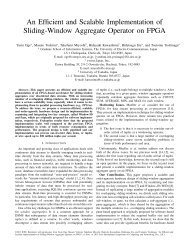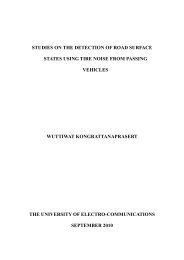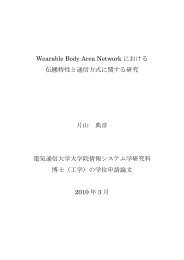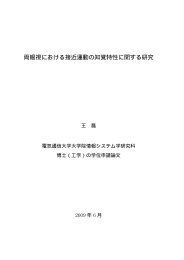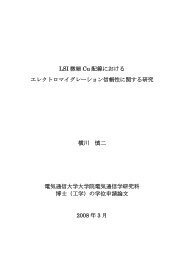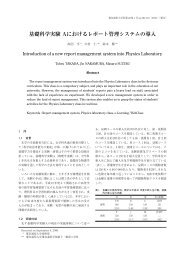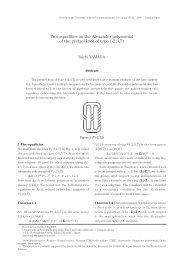a study on the spectrum efficient multi-hop wireless network
a study on the spectrum efficient multi-hop wireless network
a study on the spectrum efficient multi-hop wireless network
Create successful ePaper yourself
Turn your PDF publications into a flip-book with our unique Google optimized e-Paper software.
more <strong>hop</strong>s introduced, <strong>the</strong> less power required to transmit. In some cases, this could<br />
result in an increased battery life for users <strong>on</strong> mobile devices. Multi-<strong>hop</strong> is also known<br />
to introduce some challenges such as routing complexity and extra delay due to<br />
<strong>multi</strong>-<strong>hop</strong>.<br />
1.3 Spectral efficiency<br />
Radio resources are scarce and expensive. In order to have an ec<strong>on</strong>omically feasible<br />
system, <strong>the</strong> available resources must be used in an <strong>efficient</strong> way. In cellular systems,<br />
maximizing <strong>the</strong> number of users in each cell while maintaining an adequate level of<br />
Quality of Service (QoS); is <strong>the</strong> key to achieve <strong>efficient</strong> spectral optimizati<strong>on</strong>. In<br />
general, <strong>the</strong> <strong>spectrum</strong> efficiency is defined as <strong>the</strong> useful informati<strong>on</strong> (excluding<br />
overhead and c<strong>on</strong>trol packets) that can be transmitted per sec<strong>on</strong>d per bandwidth. It is <strong>the</strong><br />
optimized use of <strong>spectrum</strong> or bandwidth so that <strong>the</strong> maximum amount of data can be<br />
transmitted with <strong>the</strong> least amount of transmissi<strong>on</strong> errors. It is also can be c<strong>on</strong>sidered as a<br />
measure of how well <strong>the</strong> <strong>spectrum</strong> is utilized by <strong>the</strong> physical layer protocol or even <strong>the</strong><br />
media access c<strong>on</strong>trol.<br />
The spectral efficiency of a digital communicati<strong>on</strong> system is expressed in (bit/s)/Hz.<br />
It is <strong>the</strong> maximum throughput divided by <strong>the</strong> bandwidth in hertz of a communicati<strong>on</strong><br />
channel or a data link. C<strong>on</strong>sequently, <strong>the</strong> better maximum throughput and packet<br />
delivery achieved, <strong>the</strong> higher <strong>the</strong> <strong>spectrum</strong> efficiency is.<br />
The overall spectral efficiency of <strong>the</strong> system in (bit/s)/Hz is calculated using (1) [6]<br />
Overall . spectral . efficiency = Max. Throughput<br />
Bandwidth<br />
= KR<br />
W<br />
(Bits/s/Hz) (1)<br />
Where K is <strong>the</strong> number of users in <strong>the</strong> <strong>network</strong> of in <strong>the</strong> case of cellular <strong>network</strong>s, <strong>the</strong><br />
number of users in <strong>the</strong> cell. R is <strong>the</strong> maximum throughput and W is <strong>the</strong> bandwidth of <strong>the</strong><br />
system.<br />
From <strong>the</strong> equati<strong>on</strong> we can c<strong>on</strong>clude that’s more users served in <strong>the</strong> cell of <strong>the</strong> <strong>network</strong>,<br />
<strong>the</strong> better <strong>the</strong> overall spectral efficiency of <strong>the</strong> system. Moreover, improving <strong>the</strong><br />
maximum throughput also will improve <strong>the</strong> overall spectral efficiency [6].<br />
4



